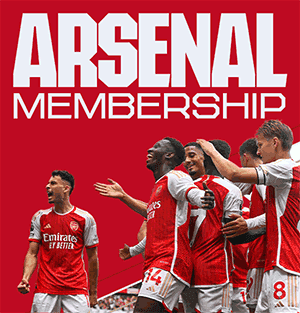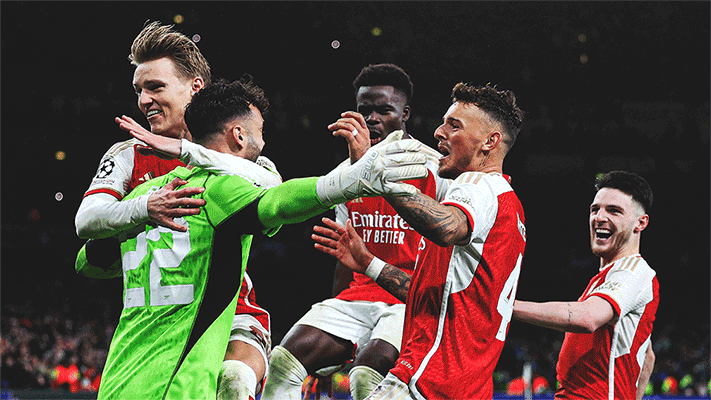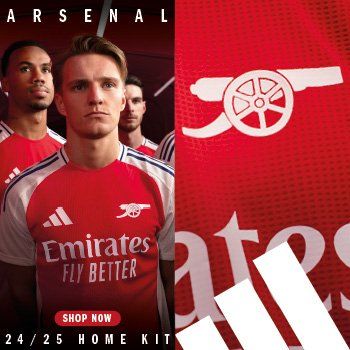David Price is one of our two long-standing club photographers. Pricey – as he’s known to everyone here, including the players – talks about how his role has evolved since he joined Arsenal in 2002, and why these days he has to deliver instantly
I’ve been employed as a club photographer at Arsenal since 2002, and without question the club has become a huge part of my life during that time.
Going back 20 years, I think I was quite nervous about taking the role, because I’d been at Colorsport – a sports photo agency – for seven years and had become accustomed to it. But at the same time, I was excited and I knew it was an opportunity I wasn’t likely to be offered again.
Arsenal were one of Colorsport’s biggest clients, which was helpful because it meant the bedding in process was easier. I knew Stuart MacFarlane – our chief photographer – because he’d previously worked there before being taken in-house here, and I’d learned a lot from my colleagues too, especially Mike King, who was a brilliant photographer and a real inspiration to me. Stuart and Mike have had the biggest influence on my career.
"When I started, we were still shooting on film. There were real limitations with how quickly you could provide pictures"
Going to Highbury was brilliant – our office was above the away changing room. You’d walk through the marble halls every day and it always felt special. Even if you’d been doing it for a few years, you’d still get this buzz when you were in the building. Working in that office was really enjoyable – you’d really be able to sense the atmosphere building up before a game.
We could smell the onions frying from the burger van outside and hear the police horses going down the street. Highbury was a special place. Looking back, I’m pleased that I joined when I did because experiencing Highbury gave me memories I won’t forget. I made friends for life at Highbury too, people like Andy Exley and Josh James who work in the media department on the programme.
In general, the job is very different now in comparison to what it was back then. What’s been the biggest change? Definitely the equipment. When I started, we were still shooting on film. There were real limitations with how quickly you could provide pictures to people. Now, we supply images instantly.
You used to go to European away matches and come back with a bag full of film. When Thierry Henry scored that goal at the Bernabeu in 2006, he ran straight towards me. I probably didn’t send the picture through to anyone until the following morning, which would absolutely not be the case in 2022!

When we shoot matches now, you have your laptop next to you, connected to your camera, because a big part of the job is reacting quickly. If we shoot anything good during the game, we’ll quickly edit and send them over to the club’s social team and to Getty Images as soon as possible. People expect live images and you need to be able to deliver that.
In the Highbury days, we used to run up to the office from pitchside and stick a few rolls of film into the developing machine at half-time. That way, when you came back at the end of the game, there would already be four rolls of film waiting for you, allowing you to start editing and scanning. Back then, you’d scan in your best dozen and send them over to those who needed them.
There’s a part of me that wishes I’d have been able to shoot at Highbury with the cameras we have now, because they’re so much better than they were then. But then on the other hand, when you look back at the pictures taken on film back then, there’s a nice, retro feel to them.
There’s a lot more to be across now. People were always interested in the youth teams and in women’s football, but not to the extent they are in 2022. The women’s game has really evolved. At the start, I wouldn’t be at the training ground each week shooting training, but I am now. We try to get to every women’s match and, if there’s a clash, we send freelancers.
Looking back though, I’m really proud that we’ve always championed the women’s game, which wasn’t the case with most clubs. I’ve travelled all over Europe with the women’s team – just like the men – and looking back, I’m really proud to have covered the games in the Champions League win in 2007 for example. I’ll never forget that season, just like I’ll never forget shooting our win over Lyon last month, which was one of the best performances I’ve ever seen.

We have more commercial work to do too. There are regular Club Days, where the players have various partner and retail shoots. We’ll often be across those. There weren’t pre-season tours in the same way there are now either. Stuart would go to Austria with the first -eam when I started, but now we’ve been touring around the world for more than a decade – and that’s an amazing part of the job.
There are a few trips that stand out – going to Sydney was brilliant because it was a place I’d never usually visit. Those trips provide you with lots of memorable moments and help you to meet people from around the club. Building relationships is really beneficial for everyone. You can all see that each other do on a daily basis and that helps you to work collaboratively in the future. Tours give you a good insight into other people’s working lives.
"The job can take over your life but you love doing it – and that makes it special"
A big part of my role is taking pictures at academy matches, and I really enjoy that. It’s always nice to see the talent coming through. The obvious example was Jack Wilshere. There was a buzz about him around the training ground. The first time I photographed him was at a reserves match at Underhill. He was only about 15 or 16 and he looked tiny but you could see straight away how good he was. He wasn’t fazed by it at all. Nothing was ever going to bother him and he quickly progressed to the first-team.
I remember one of Cesc Fabregas’ first games for the academy – it was against Crawley Town in the FA Youth Cup and he scored a lob from really far out. He can’t have been older than about 15 at the time. In more recent times, Eddie Nketiah was always an absolute goal machine. We’ve had a lot of players come through the academy and it’s always exciting to photograph those matches, because you could be watching a future star.
To sum up, Arsenal really means everything to me. We’re at so many games over the course of the season and are lucky enough to shoot training too, so you really feel like you’re living it. The job can take over your life but you love doing it – and that makes it special. I wouldn’t change it for the world.
Copyright 2024 The Arsenal Football Club Limited. Permission to use quotations from this article is granted subject to appropriate credit being given to www.arsenal.com as the source.










